South America has always carried an air of adventure. Ancient civilizations, towering mountain ranges, endless rainforests, and exotic cuisines: all are the makings of an unforgettable trip. Many dream of a journey to the rugged continent, but it’s easy to get stuck on where to go and what time of year.
To better understand which countries and destinations are best visited at which times of the year, I’ve compiled this guide to the best time to visit South America. I spent over a year living in and traveling across South America, while Worldly Adventurer founder Steph has spent since 2014 living in or returning to travel through the region. It’s fair to say we’ve experienced the continent in a range of different seasons.
Spanning everything from the tropical Caribbean coast of Colombia down to the frigid, weather-battered shores of Cape Horn, South America is a big place, and therefore it’s completely impossible to generalize about when to visit.
For this reason, I’ve highlighted key destinations across South America and when they’re at their best to help you decide.
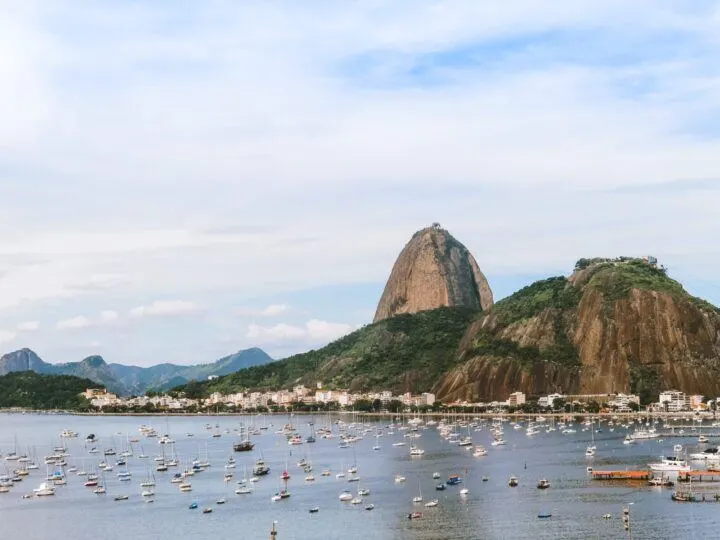
What to expect during each month in South America
- January: Journey off the beaten path to the Chiloé archipelago for whale and penguin watching, discovering its brightly-painted wooden churches, and dining on decadent seafood feasts.
- February: Living up to the hype, Carnival in Rio de Janeiro remains the world’s most exuberant party. Don bright colors, sip your caipirinha, and go with the flow.
- March: Gawk at the sheer scale and spectacle of Torres del Paine in Chilean Patagonia. By March, many of the tourist hordes have departed as this is the tail end of the high season.
- April: From the beautiful and isolated town of Tupiza, take a scenic bus ride to the otherworldly salt flats at the Salar de Uyuni to marvel at the world’s largest mirror.
- May: Few cities match the character and elegantly fading grandeur of Buenos Aires, the city of tango, asado, and football.
- June: Bring (or earn) your PADI certification as you dive into the crystalline waters of the Galápagos. Nature’s own evolutionary laboratory, the flora, and fauna are like nothing you’ve ever seen.
- July: Peak swells draw in the surf crowd up and down the coast in Brazil. Join the locals at Praia Mole near Florianópolis for waist-high barrels off a perfect stretch of golden sand.
- August: Powderhounds will revel in the endless runs at Portillo, Chile’s skiing and snowboarding mecca.
- September: The high desert of Southern Peru beguiles visitors with the delightfully atmospheric city of Arequipa, towering volcano Misti, and awe-inspiring Colca Canyon.
- October: An ideal time to visit Machu Picchu, the intact Incan city that never fails to amaze its visitors.
- November: Avoid peak season crowds to sunbathe by day and stargaze by night in the dramatic landscape of Chile’s Atacama Desert.
- December: Trek through dense jungle to La Ciudad Perdida, the lost city of the advanced pre-conquest Tayrona people in Colombia.
FAQs about the best time to visit South America
Machu Picchu and the Inca Trail
A trip to South America would be incomplete without visiting the fabled Incan city in the Andes Mountains. This area of Peru has two distinct seasons, the dry season and the wet season.
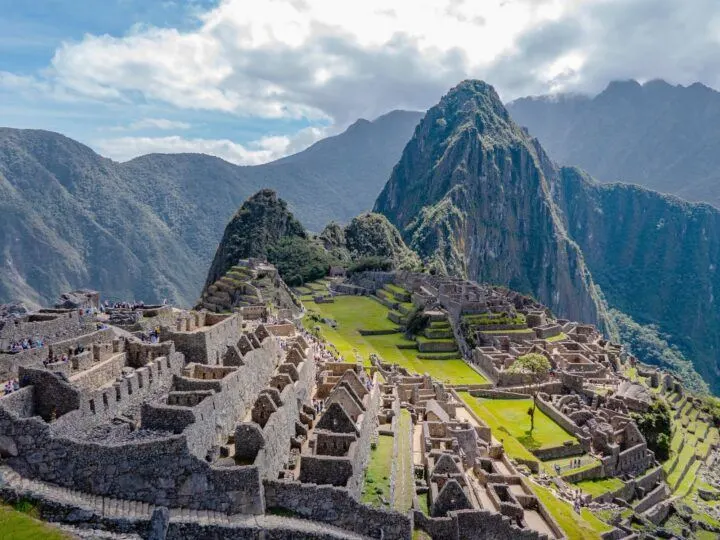
Peak Season
High season is from May through October. Visitors are guaranteed plenty of sunny days and stunning panoramic views. Nights on the Inca Trail can be brisk during the dry season, so bringing warm clothing and a well-insulated sleeping bag for the cooler temperatures is advised. Read up on detailed preparation for hiking the Inca Trail to prepare for this unforgettable South America trip.
Off Season
Travelers often avoid the wet season (November through April), as trails can be washed out when heavy rainfall occurs. However, if minimal crowds are your aim and you don’t mind some rain, it can be a great time to visit. Bear in mind that Machu Picchu and the Inca Trail close for maintenance during the month of February.
Shoulder Season
The optimal time for visiting, the shoulder season (May-June and September-October) offers smaller crowds, plenty of blue skies, and dry weather.
Founder Steph visited in June (she trekked the Salkantay trail, a lesser-known route than the Inca) and was impressed by how few other hikers she saw on the trail. This was before visitors had started returning in great numbers to Peru, however, so you might find a few more when you visit – but this is still typically the period when you can expect to encounter the fewest other visitors heading to Machu Picchu!
Buenos Aires
The dynamic capital of Argentina boasts a plethora of activities and attractions, offering visitors a memorable South America trip with its temperate climate and distinct seasons.
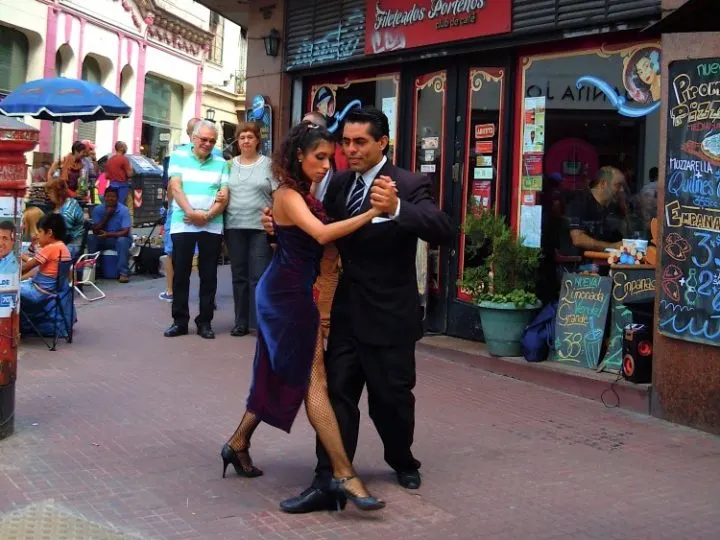
Peak Season
Buenos Aires can get steamy in the summer months, which is also the wet season. It’s the right time to enjoy the urban beaches on Rio de la Plata and dance all night in a tango bar. The high season runs from December through February.
Low Season
Although most tourists arrive for peak season, low season is actually the best time to visit. Featuring a temperate climate, Buenos Aires is most comfortable during the spring and autumn, when you can be assured of enjoying warm temperatures and blue skies, without the sticky humidity of the summer.
The best months to visit are March to May and August to November. Dancers and spectators alike flock to the city in August for the World Tango Festival and World Cup.
The Galápagos Islands
Sitting just off the equator, the Galápagos’ tropical climate makes it an ideal year-round destination. The best time to visit largely depends on what you plan on doing once you arrive.
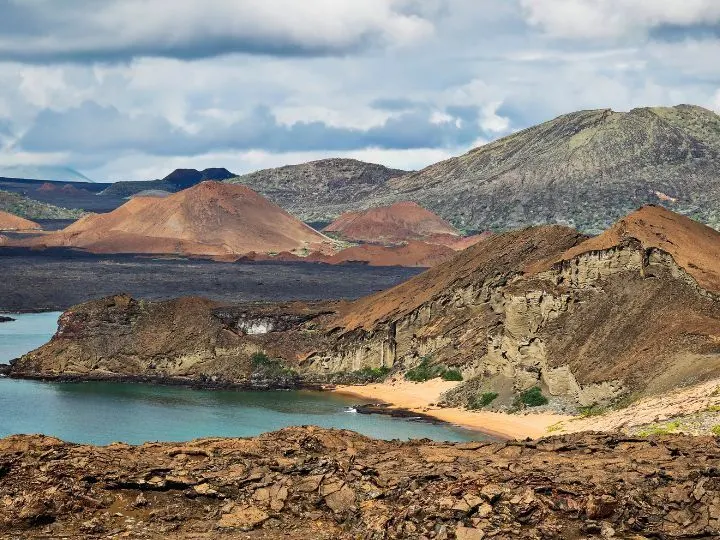
Wet Season
December through May is the rainy season, which offers the best water visibility for snorkeling or diving. Typically, the afternoon brings heavy rainfall, clearing up by the evening. On land, photographers will relish the blooming desert landscape and resultant animal feeding activity. Crowds and prices are at their highest during the holidays in late December.
Dry Season
Beginning in June and running through November, the driest months are a great time to spot marine life, such as dolphins and whales. The Humboldt Current flows north from Chile and Peru, bringing cooler temperatures both in the water and on land.
Shoulder Season
The months of November and May are an ideal time without the holidaying crowds in July and December, with the best of both wet and dry seasons. The Galápagos Conservancy has a wealth of knowledge regarding the flora, fauna, and ecosystems you will encounter.
Planning Your Trip to South America?
Save time, stress & money with a customized travel itinerary planned for you by a South America expert
The Amazon Rainforest
Spanning several countries and half a billion hectares, the Amazon rainforest is the largest and most biodiverse of its kind. Planning a trip can be a daunting task if you’re trying to avoid the heavy rainfall of the wettest months in this tropical climate.
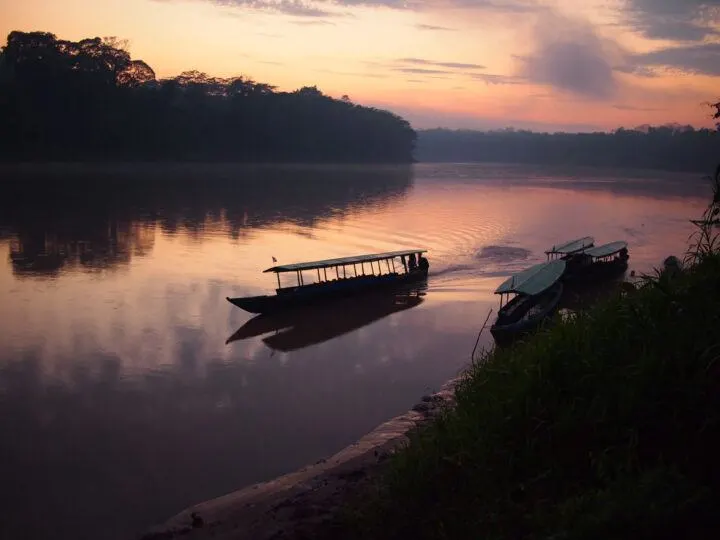
Dry Season
The best time to visit this vast destination is in the dry season, which runs from July through November. River levels are low, hiking trails are accessible, and these dry months offer the best opportunity for land-based exploration.
Because water lowers are levels, it can be easier to spot wildlife, because animals congregate around the edges of the rivers. That said, when you’re heading out by boat, the top of the jungle canopy can be very far away (in wet season, you can be a few meters higher because of the increased water levels), so it can actually be harder to spot wildlife with the naked eye.
Wet Season
While the heavy rainfall from December through June presents a major challenge, it offers a very unique experience. The wettest months bring cooler temperatures and a welcome respite from the jungle heat, but also mosquitoes and the possibility of extensive rain – which can be uncomfortable if you’re traveling back to the lodge in an open canoe!
In addition, high water levels make rivers easily navigable for expedition cruises, from Iquitos in Peru all the way to the delta at Macapá in Brazil.
Founder Steph visited the Colombian Amazon in June and stayed at lodges where the water from the swollen rivers reached up to almost the top steps of the lodge’s stairs! This is pretty typical at this time of the year and means you can travel deeper into the jungle by boat than you would otherwise.
However, it can be harder to spot wildlife because of the availability of water, although birds are easier to see during this period.
El Salar de Uyuni
Visiting the stark setting of the world’s largest salt flat is a South America trip that captivates even the most jaded globetrotter. With two distinct seasons, each with its respective allure, El Salar de Uyuni has established itself firmly on South America’s travel A-list.
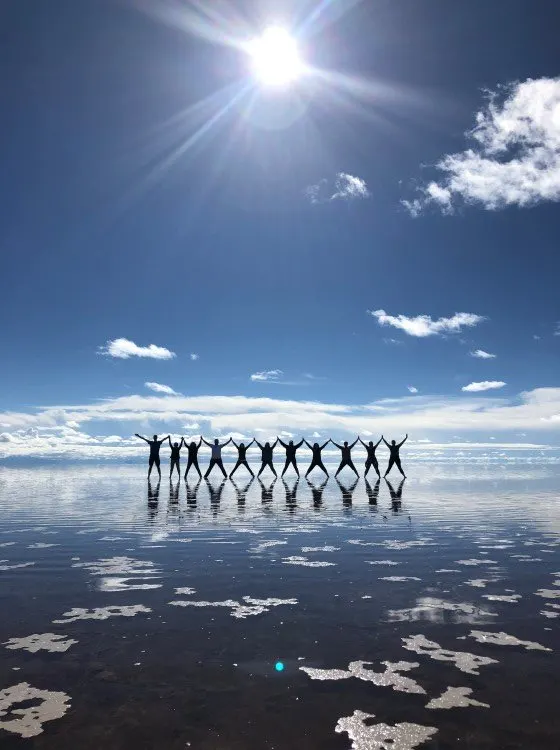
Wet Season
The most popular time to visit is in the summer months, from November through March, when the wet season’s precipitation transforms the barren landscape into an immense mirror.
While heavy rainfall can turn the dirt roads surrounding the salt flats into a muddy bog in places, setting out with the right tour group makes this a perfect time to go.
Worldly Adventurer founder Steph explored the region in March and had the incredible experience of seeing the salt flats completely underwater – an experience she certainly won’t ever forget.
Dry Season
For those seeking drier conditions (and less mud), April and October afford an outstanding time to see the salt flat at its saltiest. Temperatures drop well below freezing at night, on the high plateau just beneath the towering Andes Mountains. This is also an ideal time for stargazing since these are the driest months and the lack of light pollution ensures clear and dazzling skies.
Rio de Janeiro and São Paulo
The neighboring megalopolises of Southern Brazil offer a vibrant, nonstop energy few places on Earth can match. These are a year-round destination, with its sunny tropical climate. Come for Carnaval in Rio, come for world-class surfing and samba, or come just to take in the spectacle.
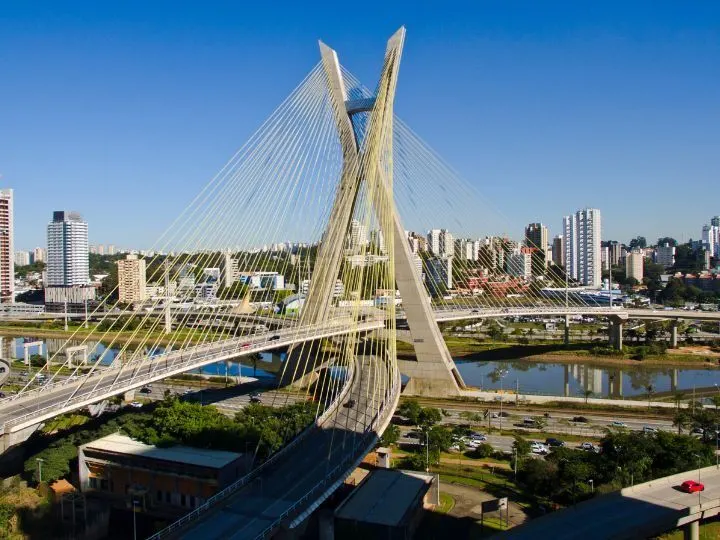
Peak Season
All of Brazil, and especially Rio de Janeiro, gear up for Carnival in February. Before you plan, check out which parades are more your style and dress comfortably. The warm temperatures make it the right time to hit the beach with a cold beverage in hand. Dress for the heat and bring sun cream. The summer months get steamy.
Winter
For those seeking a somewhat less chaotic adventure, the winter months bring cooler temperatures and sunny days. With fewer crowds, it’s a great time to enjoy a quieter beach day at Praia Vermelha under the iconic Sugarloaf Mountain in Rio, or the equally stunning Praia do Tombo just south of São Paulo.
The Atacama Desert
More Martian than earthly in appearance, the high-altitude Atacama Desert is the driest desert on the planet. Packing in active volcanoes and geysers, flamingos and vicuñas, and incredible stargazing, Chile’s Atacama is a must for lovers of adventure and extreme nature all year round.
Summer
What little rain there is generally falls in January. These occasional downpours can make some areas and roads inaccessible. Nevertheless, the summer months (from November through March) are the best for observing the night sky, although with the majority of days in the Atacama Desert rain-free, this is rarely a consideration.
That said, if you’re coming for the stars, take into account the lunar cycle as a full moon will make it practically impossible to see the constellations.
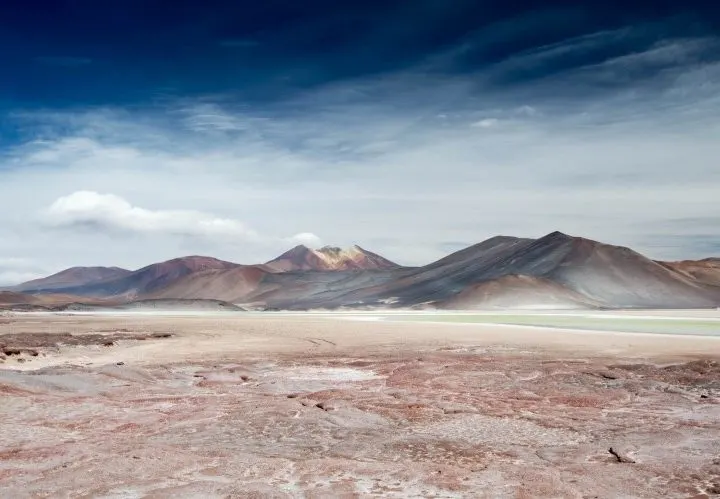
If traveling independently, make sure to hire a 4×4 to avoid the inconvenience (and indignity) of getting stuck in the mud or even in the dusty sand that lines the road. For more recommendations, read our guide to San Pedro de Atacama.
Winter
The winter months – July in particular – offer a rare opportunity to enjoy snow in the high desert. This can make some locations inaccessible, but you will likely have most attractions to yourself.
Torres del Paine National Park, Tierra del Fuego and Patagonia
Southern Chile is a land of extremes. Despite the seasonally inhospitable climate, the South American tip is a year-round destination with adventure for even the most seasoned adventurers.
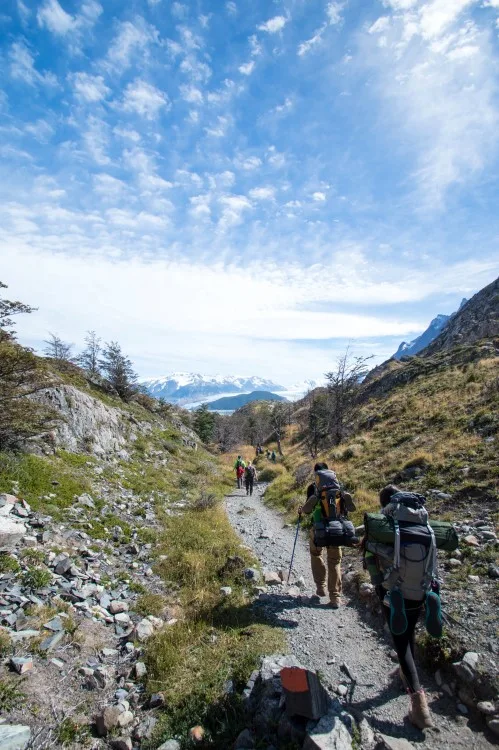
Summer
The high season in Southern Chile covers the summer months, from December through February. During this time, trekking in Patagonia and Tierra del Fuego, and ascending the mountains of Torres del Paine National Park, is most easily done.
This is, however, when droves of tourists from around the world descend on the region, so avoid these months if solitary hiking is more your style.
Shoulder Season
The best time to visit the southern end of the continent is during the shoulder months of November, March, and April. You’ll have plenty of sunny days, and the national parks see far fewer tourists.
This is an ideal time for Torres del Paine; Worldly Adventurer founder Steph has explored the park on multiple occasions in March, and found the weather to be still warm and less windy than the summer months (when speeds can reach up to 160 kilometers per hour (100 mph).
March or April are also the perfect months for photography, as the trees begin their shift from green to blazing orange. You’ll find the world’s most famous photographers descending in their droves onto the park during mid-April.
Winter
Although the winter months of May through September are cold with shorter days, this is the high season for ski resorts in Patagonia.
An added advantage for winter trekking is that you will often have large tracts of land all to yourself, although for places such as Torres del Paine National Park, you will need to hire a guide.
Worldly Adventurer founder Steph visited the park in September and found it an incredible experience. Not only were there only a handful of other hikers in the national park, the weather was sunny and settled – if quite cold during the day and far below freezing at night – and offered the perfect conditions for hiking.
While the W and O are closed to independent hikers during winter, taking a tour (such as this one with Chile Nativo) still allows you to trek the park’s most famous trails. This winter multisport tour (which Steph did) also gives you the chance to see the park beyond the multi-day trails.
Lake Titicaca
Straddling the border between Peru and Bolivia, Lake Titicaca is the world’s highest large lake, sitting at a dizzying 3,812 meters above sea level. Because of its altitude, it’s home to some of the coolest temperatures in the region, regularly dropping below freezing at night.
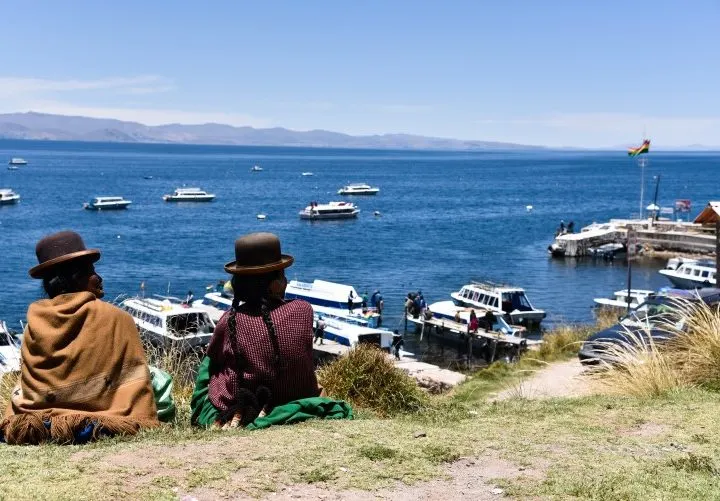
Dry Season
The best time to visit Lake Titicaca is during the winter and spring, which are characterized by their dry weather. The driest months are from May through November. This is a great time to take a boat tour and visit the spectacular Islas Flotantes de los Uros (Peru) and Isla del Sol (Bolivis).
Wet Season
The summer months of December through March routinely bring heavy rainfall. Because of the high altitude and cooler temperatures, most travelers tend to avoid the wettest months.
However, this is the best time of year to see unique local wildlife. In addition, February has the liveliest and most colorful festival of the year, the Fiesta de la Virgen de la Candelaría.
Northern Brazil
A world away from Rio and São Paulo, Northern Brazil has a culture, cuisine, and climate all its own. With two distinct seasons and countless activities to experience, there’s always something going on.
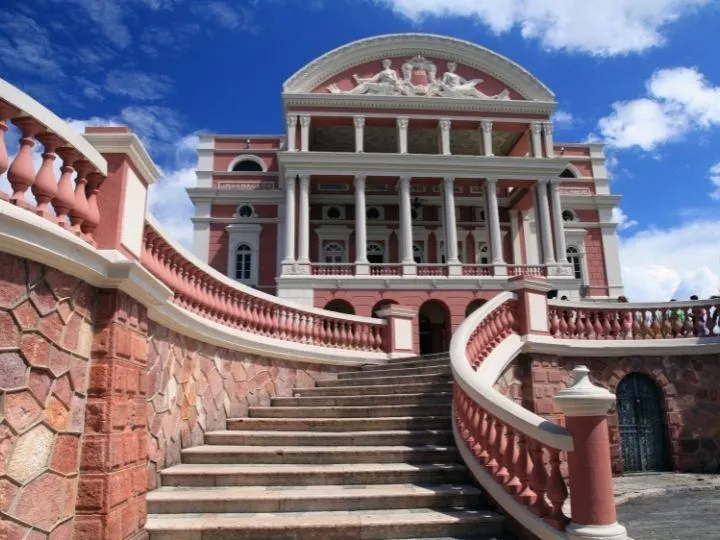
Dry Season
From June through November, Northern Brazil sees its driest months. This is the time for land-based expeditions into the interior from the city of Manaus (don’t miss its magnificent Amazonas Opera House), a UNESCO world heritage site. Closer to the coast, every June is Brazil’s second-biggest festival, the Festa Junina, celebrated most exuberantly in the state of Maranhão.
Wet Season
December through May brings rain to the northeastern coast, with brief, heavy rainfall in the afternoons. River water levels are high in the interior, making this the best time for expedition cruises on the Amazon and its tributaries. Salvador, on the southern edge of the region, experiences less rain. Its Carnival in February is the largest in Brazil and sees fewer foreign tourists than the more famous Rio Carnival.
Tayrona National Park
Hugging the Caribbean coast of northern Colombia, Tayrona National Park is a tropical paradise of jungle-clad mountains and hidden beaches.
Whether you’re seeking perfect blue skies at the beach or the untouched wilds of the jungle interior, this part of South America has you covered.
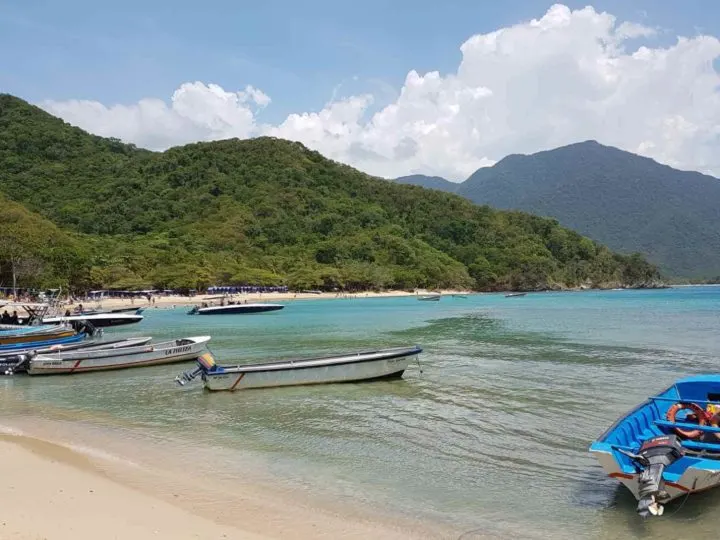
Dry Season
From mid-December through April, the region sees dry weather. On the coast, the time is right to set up on the beach and work on a tan. Bear in mind that a number of the park’s beaches are not safe for swimming, so if you want to cool off, you’ll need to find one that is.
Many tourists choose this time to make the jungle trek to the Lost City (Ciudad Perdida), as trails and river crossings are easy to negotiate and mosquito numbers are down.
Wet Season
From May through November, the rainy season sees rainfall in the afternoons, especially as you venture further from the coast. Jungle treks can become a no-go, as trails and rivers might become impassable. Mosquitos lay claim to the rainforest, too, making any sort of hiking quite unpleasant, as founder Steph discovered when she hiked to the Lost City in June.
Shoulder Season
The best months to get the best of the area, without the crowds, are April and early December. Rain is irregular at this time, and you will be guaranteed an intimate experience trekking to and exploring Ciudad Perdida (get a 5% discount by using the code WORLDLY5) with far fewer mosquitoes!
For more information about when to visit Colombia, read our detailed guide.
Colca Canyon and Arequipa
Landscapes don’t get much more dramatic than this. The high desert is home to towering volcanoes and canyons, as well as Peru’s second city. And because of the dry climate, it’s always a great time to visit.
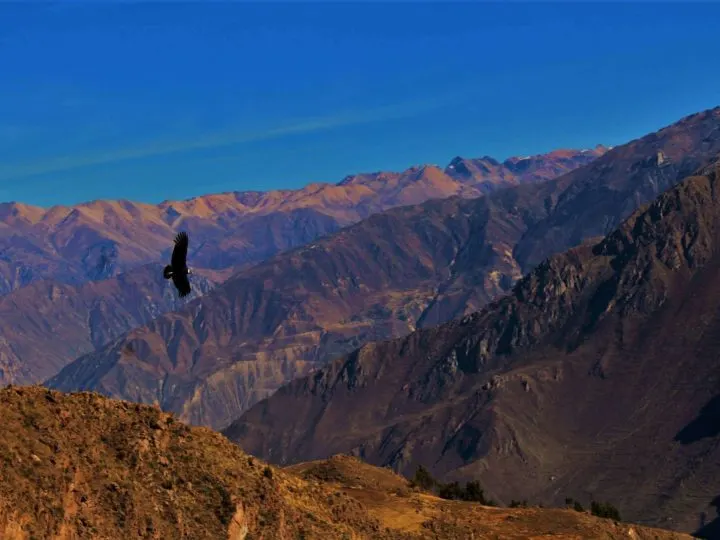
Summer
The little rain that does fall comes from January to March. These wettest months cause the desert to bloom and make a trip to Colca Canyon an unforgettable experience. Nights are also a bit warmer for those who camp during the trek.
Dry Season
April through December are the driest months when it hardly ever rains. This is a perfect time for stargazing and extended treks along the Colca Canyon. Every May in the tiny hamlet of Chapi is the Virgen de Chapi festival, an important pilgrimage, and local religious procession.
Shoulder Season
It’s difficult to ignore the imposing Volcán Misti, which towers over Arequipa and the surrounding area. The best time to make the ascent is in the shoulder season, specifically in November or April.
The Atlantic Coast
The waters of the Atlantic are a prime attraction for those planning a South America trip, and for good reason. Nearly the entire length of Brazil is littered with sandy beaches and legendary surf breaks. In contrast, the southern coasts of Patagonia offer cooler temperatures and dramatic landscapes.
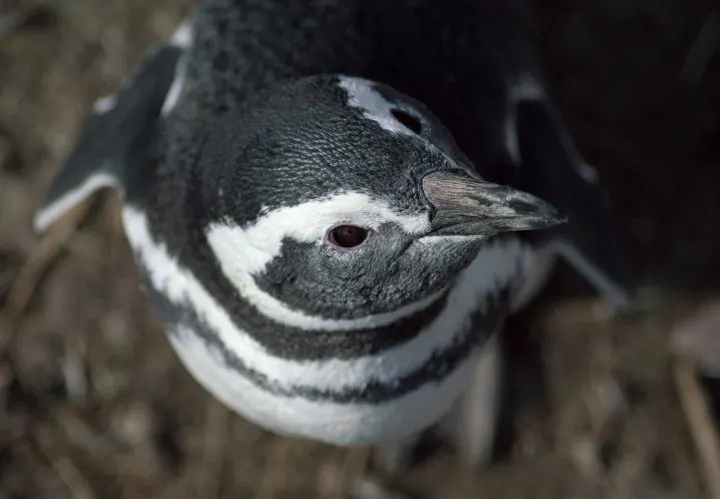
Summer
The South American summer, from December to March, is the right time to explore the Patagonian coast, where you can see migratory whales, dolphins, and penguins at Punta Tombo. This is also high season for the stylish beach towns of Uruguay and Southern Brazil, like Punta del Este and Florianópolis.
Winter
As winter sets in further south, the Brazilian coast sees its driest months and cooler temperatures. Peak swells await surfers from June to September, one stunning beach after another.
Shoulder Season
A testament to Brazil’s diverse ethnic background, locals and tourists alike join in for the world’s second-largest Oktoberfest at Blumenau, just inland from Brazil’s southern coast in Santa Catarina.
With so many epic adventures on this vast continent, you can’t go wrong. Now that you know what time of year suits each destination, your adventure is one step closer to fruition. If one thing is for certain, now is the best time to visit South America!
Before you go, read our complete South America packing list for a full guide to what should go into your luggage, find out which countries are the safest in South America and which countries are best for hiking, dining, supping wine or appreciating remarkable natural sites.
